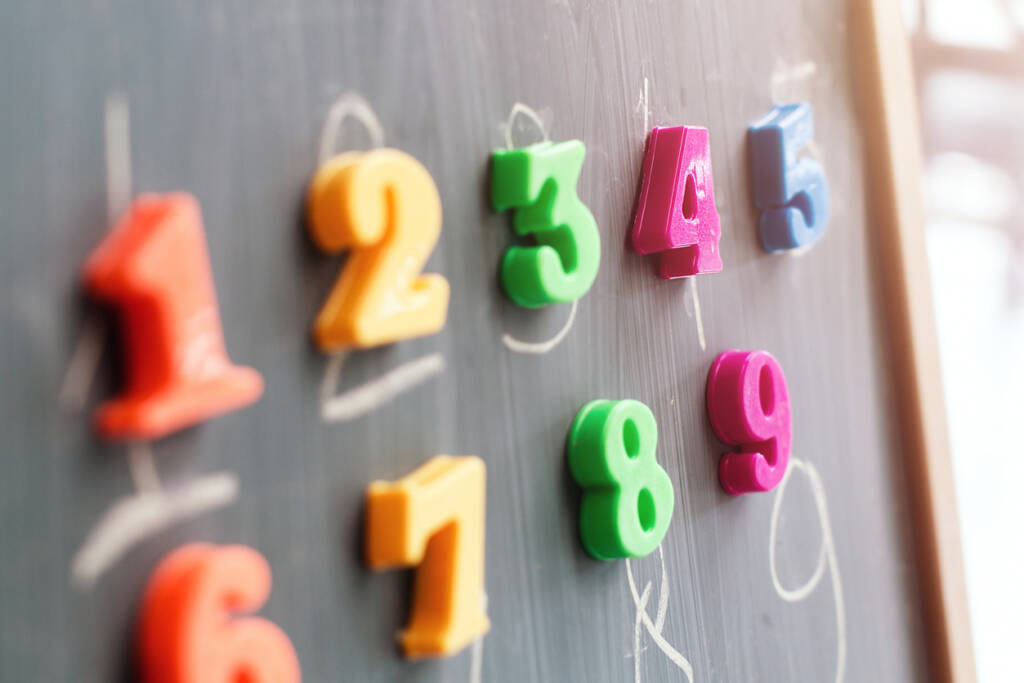
Elementary Math Grade 5

The Elementary math courses inspire students to become critical thinkers
and problem solvers. The learners use math as a tool to make sense of and understand the world around them. The courses include media that uses sight and sound to engage students. For example, rhymes, chants, songs, and videos help teach and practice foundational math skills. The focuses of the 4-5 math courses are multiplication and division within 100, fractions, decimals, shapes, area, and volume. Students are provided with many practice opportunities that involve both on-screen and off-screen activities.
Please view the Elementary Parents Guide for Grades 3-5 with guidance on helping your student transition to online learning and thrive at VLACS.
Major Topics and Concepts
Module One: Understand Place Value
Module Two: Add and Subtract Decimals to Hundredths
Module Three: Fluently Multiply Multi-Digit Whole Numbers
Module Four: Use Models and Strategies to Multiply Decimal Numbers
Module Five: Use Models and Strategies to Divide Whole Numbers
Module Six: Use Models and Strategies to Divide Decimal Numbers
Module Seven: Use Equivalent Fractions to Add and Subtract Fractions
Module Eight: Apply Understanding of Multiplication to Multiply Fractions
Module Nine: Apply Understanding of Division to Divide Fractions
Module Ten: Understanding Volume Concepts
Module Eleven: Convert Measurements
Module Twelve: Represent and Interpret Data
Module Thirteen: Write and Interpret Expressions
Module Fourteen: Graph Points on a Coordinate Plane
Module Fifteen: Algebra: Analyze Patterns and Relationships
Module Sixteen: Classify Two-Dimensional Figures
Course Materials
To achieve success, students are expected to submit work in each course weekly. Students can learn at their own pace; however, “any pace” still means that students must make progress in the course every week. To measure learning, students complete self-checks, practice lessons, multiple choice questions, projects, discussion-based assessments, and discussions. Students and families are expected to maintain regular contact with teachers because, when teachers, students, and parents work together, students are successful.
Required Materials – Please view the list of materials before registering.
Competencies
Add and Subtract Decimals
I can solve addition word problems with multiple decimal numbers based on place value and properties of operations. I can solve addition equations with multiple decimal numbers based on place value and properties of operations. I can estimate sums when adding decimal numbers by rounding. I can solve subtraction word problems with multiple decimal numbers based on place value and properties of operations. I can solve subtraction equations with multiple decimal numbers based on place value and properties of operations. I can estimate differences when subtracting decimal numbers by rounding.
Addition and Subtraction of Fractions
I can estimate the sum or difference of fractions with unlike denominators. I can solve real world problems involving the addition of fractions. I can solve addition equations of mixed numbers with unlike denominators by creating equivalent fractions. I can solve real world subtraction equations involving the subtraction of fractions. I can solve subtraction equations of mixed numbers with unlike denominators by creating equivalent fractions. I can solve real world addition and subtraction problems using fractions with unlike denominators. I can solve real world problems involving addition and subtraction of mixed numbers.
Division of Whole Numbers and Decimals
I can solve equations for the quotients of numbers that are multiples of 10 using mental math. I can solve equations for the quotients of whole numbers with three-digit dividends and one-digit divisors using a standard algorithm. I can solve equations for the quotients of whole numbers with up to five-digit dividends and two-digit divisors using a standard algorithm. I can estimate quotients using strategies based on rounding, number sense, place value, or properties of operations. I can solve division equations of a decimal number by a whole number using strategies based on place value and properties of operations. I can solve division equations of a decimal number by a decimal number using strategies based on place value and properties of operations. I can solve word problems by fluently dividing whole numbers and decimals using strategies based on place value or properties of operations.
Multiplication and Division of Fractions
I can solve multiplication equations of a fraction and a whole number. I can solve multiplication equations of a fraction and a fraction. I can solve multiplication word problems involving mixed numbers or fractions. I can explain the multiplication of a given number by a fraction greater than one, resulting in a product greater than the given number. I can solve division word problems of whole numbers using equations. I can solve division equations of a whole number or unit fraction by a unit fraction or non-zero whole number. I can solve word problems involving whole numbers and unit fractions using division.
Multiplication of Whole Numbers and Decimals
I can explain the relationship of the placement of the decimal point when a decimal number is multiplied by a multiple of 10. I can solve multiplication equations of a whole number using a multiple of 10. I can solve multiplication equations of whole numbers using a standard algorithm. I can estimate products of multi-digit whole numbers. I can solve multiplication equations of a decimal number and a whole number using strategies based on place value and properties of operations. I can solve multiplication equations of decimal numbers using strategies based on place value and properties of operations.
Understand Place Value
I can write whole numbers and decimals using a given form. I can write whole numbers and decimals as fractions using a given form. I can explain the movement of the decimal point when multiplying multi-digit whole numbers by multiples of 10. I can explain the value of a digit in one place representing ten times less or more than what it represents in the place to the left or right. I can describe steps to compose and decompose multi-digit numbers with decimals to the thousandths. I can explain the rounding of decimals to any place value. I can compare two decimal numbers based on meanings of the digits in each place, using >, =, < symbols to record the results of comparisons.
Classification of Two and Three-Dimensional Shapes
I can classify triangles based on a given side length or angle measurement. I can classify quadrilaterals based on a given side length or angle measurement. I can classify two-dimensional shapes into diagrams using their attributes. I can classify three-dimensional shapes based on defining attributes. I can classify three-dimensional shapes based on given side faces, or bases. I can classify three-dimensional shapes based on given apexes, or edges.
Convert Measurements
I can describe the steps to convert units of time using multiplication and division. I can describe the steps to convert customary units of capacity using multiplication and division. I can describe the steps to convert customary units of weight using multiplication and division. I can describe the steps to convert customary units of length using multiplication and division. I can describe the steps to using multiplication or division when converting metric units. I can describe the steps to convert metric units of length using multiplication and division. I can describe the steps to convert metric units of capacity using multiplication and division. I can describe the steps to convert metric units of mass using multiplication and division.
Coordinate Planes and Numerical Patterns
I can identify the x-axis, y-axis, and an ordered pair. I can explain the relationship between an ordered pair and its location on the coordinate plane. I can graph points in the first quadrant of the coordinate plane. I can solve real-world problems by graphing points in the first quadrant. I can explain the coordinate values of ordered pairs in real world contexts. I can create a rule that can describe a pattern as an expression. I can create numerical patterns based on given rules. I can graph ordered pairs on a coordinate plane.
Represent and Interpret Data
I can calculate for the mean, median, mode, and range of a data set. I can interpret data and create visual representation of data. I can analyze line graphs. I can solve problems in line plots using operations of fractions and decimals. I can create a line plot with a given data set. I can solve problems involving information presented in line plots by adding, subtracting, multiplying, or dividing fractions or decimals.
Understand Area and Volume
I can solve perimeter or area equations of a rectangle using fractional or decimal side lengths. I can explain a unit cube having 1 cubic unit of volume to measure volumes of three-dimensional shapes. I can solve volume equations of three-dimensional shapes by using a given formula. I can solve multiplication equations for volume in three- dimensional shapes by using commutative and associative properties. I can solve real world problems of volume of a composite figure by partitioning the figure into two non-overlapping rectangular prisms and adding their volumes. I can solve real world problems involving volumes of three-dimensional figures.
Write and Interpret Expressions
I can evaluate expressions using the order of operations, including parentheses. I can evaluate expressions that include fractions using the order of operations. I can evaluate expressions that include decimals using the order of operations. I can interpret mathematical descriptions into numerical expressions. I can interpret numerical expressions into mathematical descriptions. I can explain the steps to prove if an equation involving any of the four operations is true or false. I can write an equation involving any of the four operations to determine the unknown whole number.

